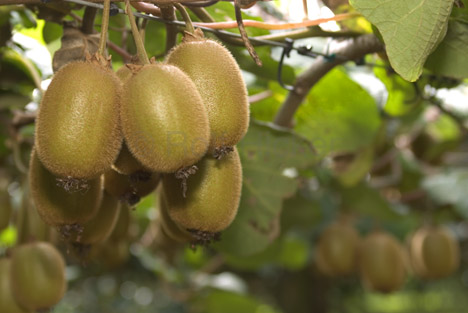Kiwi fruit season

The growing season for kiwifruit is long –up to 240 days a year. Throughout the winter (June toAugust), kiwifruit starts to grow again Buds tend to first appear in September, the beginning of springin Iran. Flower buds are next, and with the help of honeybees, the kiwifruit are pollinated between mid- September to mid-November. more specifically Male and female flowers grow on separate kiwifruit plants. Male flowers (top) produce pollen from the numerous stamens. Female flowers (bottom) have a well-developed ovary with long sticky stigmas in the centre. Although female flowers have stamens, they do not produce functional pollen. At harvest time (March to June) kiwifruit are first tested for ripeness and when they pass a certain criteria for quality and grade, kiwifruit is carefully picked by teams of workers (many from overseas).
Once the kiwifruit has been picked, it is transported to the packhouse to be packed and stored ready for shipping and export.Generally kiwifruit plantings can be handled much like muscadine grapes, however, they are much more susceptible to wind damage and root-knot nematodes, and require more supplemental irrigation than muscadine grapes. Many soil types are suitable, provided they are well drained. The soil pH should be adjusted to 6.0 to 6.5 and nematodes controlled before planting and also The deep, yellow-brown loams of the Bay of Plenty are well-drained, but need regular nitrogen, phosphorus and potassium once the vines begin cropping. Orchards are usually fertilised in spring and early summer with 200 kilograms of nitrogen, 55 kilograms of phosphorus and 100–150 kilograms of potassium per hectare.
Generally kiwifruit
vines are fairly hardy and grow in a wide range of temperatures, but to produce satisfactory fruit they need:
• well-drained, fertile soils
• shelter from the wind
• adequate moisture year-round
• protection from autumn and spring frosts.
